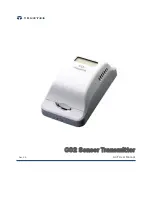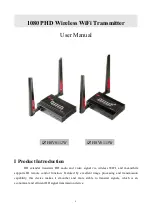
USER SAFETY INFORMATION
vii
Caution(s)
To prevent possible damage to the device, do not use sharp or hard objects to depress buttons, only use
fingertips.
Do not attempt to clean the device or patient cables by submersing into a liquid, autoclaving, or steam cleaning
as this may damage equipment or reduce its usable life. Use of unspecified cleaning/disinfecting agents, failure
to follow recommended procedures, or contact with unspecified materials could result in increased risk of harm
to users, patients and bystanders, or damage to the device. Do not sterilize the device or patient cables with
Ethylene Oxide (EtO) gas.
The device and patient cable should be cleaned between each use. Inspect cable and connections for damage or
excessive wear prior to each use. Replace cable if damage or excessive wear is noted.
Reusable pulse oximetry sensors must be cleaned between patients. Unplug the sensor from the device before
cleaning or disinfecting. Refer to the user instructions accompanying the type sensor being used for proper
cleaning and disinfecting.
Certain conditions such as physical movement (patient and imposed motion); diagnostic testing; low perfusion;
electromagnetic interference; electrosurgical units; dysfunctional hemoglobin; and inappropriate positioning of
the pulse oximeter sensor may result in pulse oximetry readings that are unreliable.
Do not pull or stretch patient cables as this could result in mechanical and/or electrical failures. Patient cables
should be stored after forming them into a loose loop.
The device will only work with receiving devices that are equipped with the appropriate option.
No user-serviceable parts are inside. Damaged or suspected inoperative equipment must be immediately
removed from use and must be checked/repaired by qualified service personnel prior to continued use.
This device is not recommended for use in the presence of imaging equipment such as Magnetic Resonance
Imaging (MRI) and Computed Tomography (CT) devices, etc.
The following equipment may cause interference with the RF channel: microwave ovens, diathermy units with
LANs (spread spectrum), amateur radios, and government radar.
When necessary, dispose of the device, its components and accessories (e.g., batteries, cables, electrodes),
and/or packing materials in accordance with local regulations.
AA batteries are known to leak their contents when stored in unused equipment. Remove battery from device
when not used for an extended period of time.
To prevent possible damage to the device during transport and storage (while in original packaging) the
following environmental conditions must be adhered to:
Ambient Temperature Range:
-20°C to 65°C (-4°F to 149°F)
Relative Humidity Range:
5% to 95% (non-condensing)
Atmosphere Pressure:
700 hPa to 1060 hPa
Summary of Contents for T12
Page 14: ...GENERAL CARE xii ...
Page 42: ...SECTION 3 22 ...
Page 46: ...APPENDIX A 26 ...
Page 52: ...APPENDIX B 32 ...










































